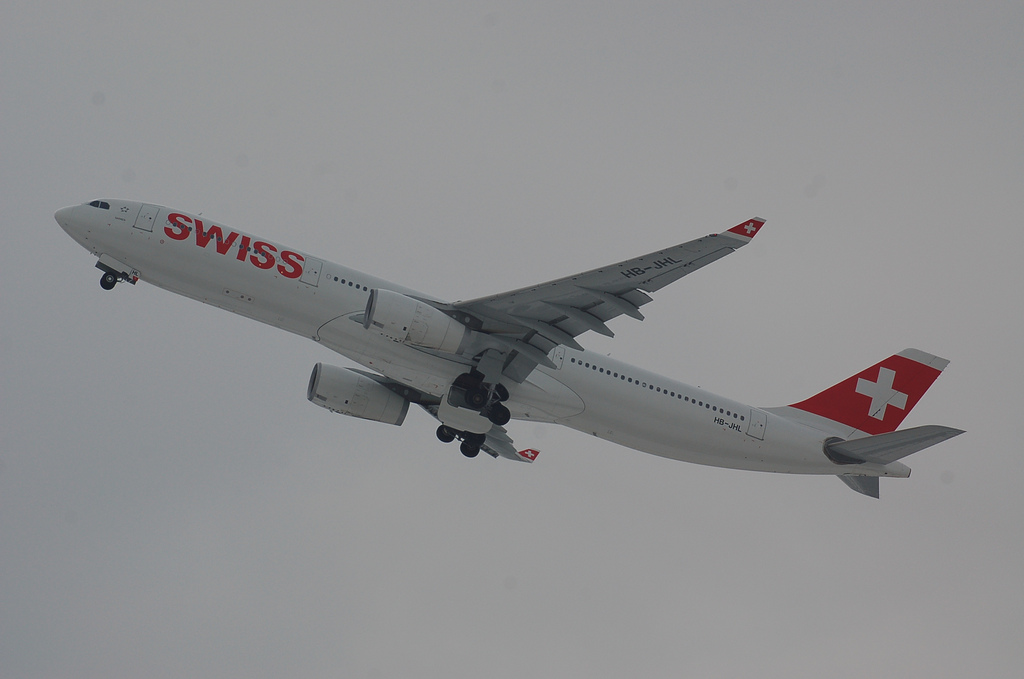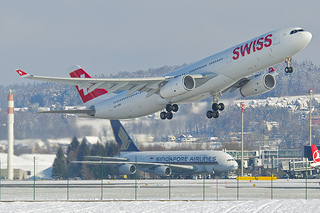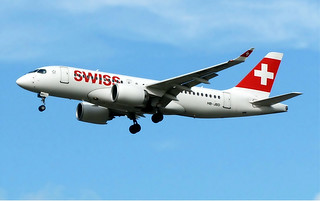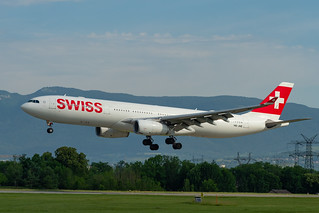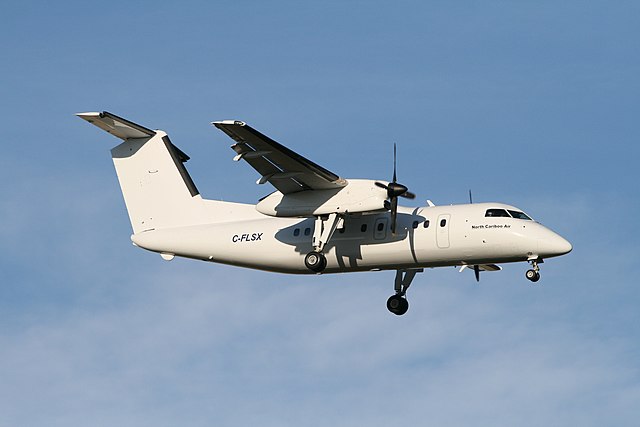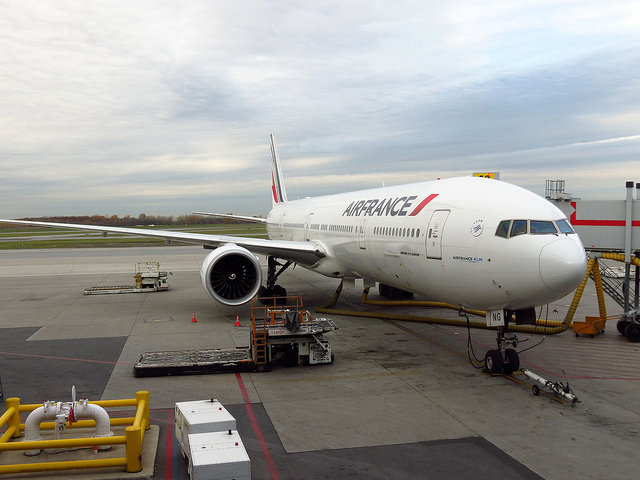Swiss A333 enroute on Jul 11th 2023, unusual odour in cockpit and cabin
Last Update: June 4, 2025 / 14:00:16 GMT/Zulu time
Incident Facts
Date of incident
Jul 11, 2023
Classification
Incident
Airline
Swiss International Airlines
Flight number
LX-18
Departure
Zurich, Switzerland
Destination
Newark, United States
Aircraft Registration
HB-JHL
Aircraft Type
Airbus A330-300
ICAO Type Designator
A333
The airline reported the aircraft diverted due to an unusual odour in cockpit and cabin.
The aircraft is currently still on the ground in Paris about 3 hours after landing.
On Oct 11th 2023 Switzerland's SUST reported they opened an investigation into the occurrence rated a serious incident stating: "During an inflight emergency due to a smell event of unknown nature, the cabin crew had to wear protective breathing equipment (PBE) as a precautionary measure. Some of the respirators were damaged after difficult removal from the vacuum packaging and could no longer fulfill their protective function."
On Jun 4th 2025 the SUST released their final report concluding the probable causes of the serious incident were:
In the serious incident, an unusual smell developed in the aircraft cabin during the cruise flight, the cause of which could not be determined. This prompted the cockpit crew to put on their oxygen masks and several cabin crew members to use Protective Breathing Equipment (PBE). Several cabin crew members reported significant difficulties in using the PBE, both in unpacking, unfolding, putting on and activating the units and in their subsequent use. In addition, several PBE units exhibited technical defects and were therefore not or only partially functional. This represents a significant safety risk.
The following factors contributed to the serious incident:
- The recurring maintenance measures were inadequate, which is why the existing defects in the PBE units remained undetected.
- The crew members were trained exclusively with dummy PBE provided for training purposes, which differs considerably from the real PBE used in an emergency. As a result, the crew members were unaware of various difficulties when using the PBE.
- The technical design of the PBE was such that trained cabin crew members were unable to activate the PBE within a reasonable amount of time. The time required was several times longer than that specified in the certification criteria. In addition, communication was severely impaired when the PBE was in use.
The SUST analysed human and operational factors:
Smell perceptions
The cockpit crew noticed an unusual smell for the first time during taxiing to the runway. The conclusion that it was odours from the heated taxiway surface due to the high summer air temperature on that day is obvious and conclusive. The decision to continue the flight and takeoff is therefore comprehensible.
During the initial climb, the smell was strong but dissipated shortly thereafter. During the flight, the smell intensified again, prompting several cabin crew members to complain of physical discomfort. The cockpit crew then decided to make a diversion to a suitable airport. They put on their oxygen masks, as the origin of the smell remained unknown, and carried out the correct emergency procedures. This procedure was appropriate to the situation.
This case, as well as many other incidents involving fumes or smell, is an example of how difficult it is to make a conclusive assessment of the situation, as it is generally not possible to determine the cause of the fumes and smell. For this reason, a crew must a priori assume the worst plausible case, for example, that a fire could develop undetected and of unknown origin. Subtle warning signals, such as the perception of physical symptoms in individual crew members or passengers, must therefore always be taken seriously, even if no obvious causes for these symptoms can be identified.
Protective Breathing Equipment
The initial and recurring training of crew members, who must be able to use PBE, takes place with dummy PBE. The dummy PBE is not packaged and is ready to be placed on the head.
Under these conditions, the important first part of the application, namely the removal of the PBE from the vacuum-sealed packaging and the unfolding of the PBE before putting it on the head, cannot be practised. However, the functional demonstrations carried out during the safety investigation showed that unpacking the PBE from the vacuum-sealed packaging and the subsequent unfolding of the PBE in particular caused considerable difficulties. In addition, the dummy PBE does not simulate the strong heat development after activation or the difficult breathing with the PBE put on.
As trainers do not usually gain experience with real PBE at any point in their professional careers, they cannot draw on their own experiences with any difficulties in dealing with PBE. Accordingly, they are unable to raise the trainees' awareness of difficulties in a targeted manner.
In an emergency situation, crew members are exposed to increased stress. For example, crew members who experienced a real emergency situation reported a "startle moment" at the point when they had to use PBE. Appropriate training can counteract these effects.
For all the reasons mentioned above, training with PBE should be designed to be as realistic as possible so that crew members can draw on this training experience in an emergency. The Swiss Transportation Safety Investigation Board issues a safety notice in this regard.
During the serious incident, some PBE was worn for significantly longer than the 15 minutes specified in the approval criteria. However, the supply of breathing air is only guaranteed for this period by design. At some point after 15 minutes, the KO2 container is depleted, and the chemical process no longer generates oxygen. The wearer should be able to recognize this expiration by the temperature and humidity in the smoke hood rising and by breathing becoming more difficult. If the PBE is not removed during this phase, oxygen deficiency may occur.
Aircraft Registration Data
Incident Facts
Date of incident
Jul 11, 2023
Classification
Incident
Airline
Swiss International Airlines
Flight number
LX-18
Departure
Zurich, Switzerland
Destination
Newark, United States
Aircraft Registration
HB-JHL
Aircraft Type
Airbus A330-300
ICAO Type Designator
A333
This article is published under license from Avherald.com. © of text by Avherald.com.
Article source
You can read 2 more free articles without a subscription.
Subscribe now and continue reading without any limits!
Read unlimited articles and receive our daily update briefing. Gain better insights into what is happening in commercial aviation safety.
Send tip
Support AeroInside by sending a small tip amount.
Related articles
Swiss A333 at Zurich on Jul 17th 2025, rejected takeoff on ATC instruction
A Swiss International Airlines Airbus A330-300, registration HB-JHL perfomring flight LX-154 from Zurich (Switzerland) to Mumbai (India), was cleared…
Swiss A333 at Zurich on Jun 28th 2014, rejected takeoff
A Swiss International Airlines Airbus A330-300, registration HB-JHL performing flight LX-154 from Zurich (Switzerland) to Mumbai (India), was…
Swiss A333 at Boston on Sep 16th 2025, rejected takeoff due to engine failure
A Swiss International Airlines Airbus A330-300, registration HB-JHM performing flight LX-55 from Boston,MA (USA) to Zurich (Switzerland) with 236…
Swiss BCS1 at Zurich on Jul 9th 2025, cabin altitude indication
A Swiss International Airlines Bombardier C-Series CS-100, registration HB-JBD performing flight LX-1418 from Zurich (Switzerland) to Belgrade…
Swiss BCS3 near Friedrichshafen on Jul 7th 2025, fault messages in cockpit, smoke in cabin
A Swiss International Airlines Bombardier C-Series CS-300, registration HB-JCA performing flight LX-1413 from Belgrade (Serbia) to Zurich…
Swiss A333 near Graz on Jun 26th 2025, attitude sensor problem
A Swiss International Airlines Airbus A330-300, registration HB-JHE performing flight LX-146 from Zurich (Switzerland) to Delhi (India), was enroute…
Newest articles
Creebec DH8A at Val d'Or on Oct 26th 2023, near collision with terrain
An Air Creebec de Havilland Dash 8-100, registration C-FLSX performing flight YN-238 from Chisasibi,QC to Val d'Or,QC (Canada) with 28 passengers and…
France B773 over Switzerland on Oct 24th 2025, heat in the cabin
An Air France Boeing 777-300, registration F-GZNG performing flight AF-652 from Paris Charles de Gaulle (France) to Saint Denis (Reunion) with 312…
Subscribe today
Are you researching aviation incidents? Get access to AeroInside Insights, unlimited read access and receive the daily newsletter.
Pick your plan and subscribePartner

ELITE Simulation Solutions is a leading global provider of Flight Simulation Training Devices, IFR training software as well as flight controls and related services. Find out more.
SafetyScan Pro provides streamlined access to thousands of aviation accident reports. Tailored for your safety management efforts. Book your demo today
AeroInside Blog
Popular aircraft
Airbus A320Boeing 737-800
Boeing 737-800 MAX
Popular airlines
American AirlinesUnited
Delta
Air Canada
Lufthansa
British Airways
